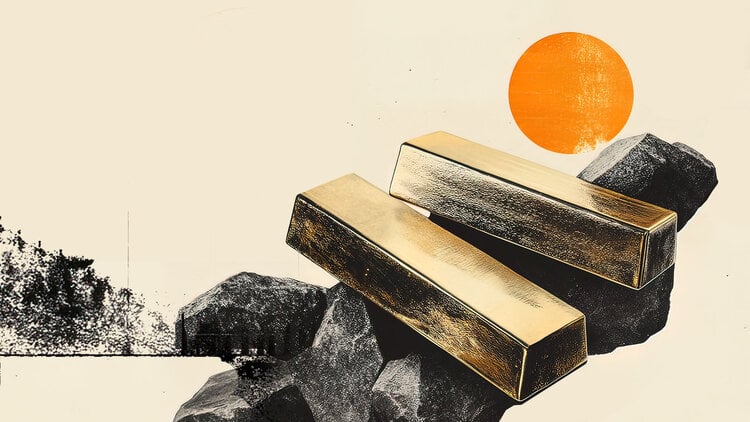Scientists have debated its existence. Small traces provided clues. Now, researchers have confirmed the existence of a celestial diamond after finding it on Earth’s surface.
The stone, called lonsdaleite, has a hardness and strength that surpasses that of an ordinary diamond. The rare mineral arrived here via a meteorite, new research suggests.
What’s more, the natural chemical process through which scientists believe lonsdaleite formed could inspire a way to manufacture super-durable industrial components, according to the authors of the study published Sept. .
The revelation began to unfold when geologist Andy Tomkins, a professor at Monash University in Australia, was in the field categorizing meteorites. He found a strange type of “bent” diamond in a space rock in northwest Africa, said study co-author Alan Salek, a doctoral student and researcher at RMIT University in Australia.
Tomkins theorized that the meteorite that contained the lonsdaleite came from the mantle of a dwarf planet that existed about 4.5 billion years ago, Salek said.
“The dwarf planet was then catastrophically hit by an asteroid, releasing pressure and leading to the formation of these really weird diamonds,” he added.
With its cutting-edge methods and possibilities for the future, the discovery is exciting, said Paul Asimow, a professor of geology and geochemistry at the California Institute of Technology. Asimow was not involved in the study.
“It really takes advantage of a number of recent developments in microscopy to make what they did as well as they did,” Asimow said.
The team was able to analyze the meteorite with the help of electron microscopy and advanced synchrotron (a type of particle accelerator) techniques, which built maps of the space object’s components, including lonsdaleite, diamond and graphite, according to the study.
Diamonds and lonsdaleite can form in three ways. It can be through high pressure and temperature for a long period of time, which is how diamonds form on the Earth’s surface; the shock of a meteor hypervelocity collision; or the release of vapors from broken graphite that would cling to a small diamond fragment and develop over it, Asimow said.
The method that creates the mineral can influence its size, he added. The researchers proposed in this study that the third method formed the largest sample they found.
“Nature has provided us with a process to try to replicate in the industry,” Tomkins said in a press release. “We think lonsdaleite could be used to make tiny, ultra-strong machine parts if we can develop an industrial process that promotes the replacement of precast graphite parts with lonsdaleite.”

The composition of lonsdaleite
Long before this discovery, scientists debated the existence of lonsdaleite, Asimow said.
“It seems like a weird claim that we have a name for something, and we all agree on what it is,” he added, “and there are still claims in the community that it’s not a real mineral, it’s not a real crystal, that you could have a macroscopic scale.”
Scientists first identified chunks of the mineral in 1967, but they were tiny — about 1 to 2 nanometers, which is 1,000 times smaller than what was found in the most recent discovery, Salek said.
Finding a larger sample showed that lonsdaleite is not just an anomaly of other diamonds, Asimow said.
Ordinary diamonds, like the ones you see in fine jewelry, are made of carbon and have a cubic atomic structure, Salek said. As the hardest material known so far, they are also used in manufacturing.
Lonsdaleite is also made of carbon, but it has an unusual hexagonal structure, he added.
Researchers have modeled the structure of lonsdaleite before and theorized that the hexagonal structure could make it up to 58% harder than ordinary diamonds, Salek said. This hardness could make the rare space diamond a valuable resource for industrial applications if scientists can find a way to use the new production method to create minerals large enough.
What does this mean for us?
Now that scientists know about this mineral, the discovery raises the question of whether they can replicate it.
Tools like saw blades, drill bits and mining materials need to be durable and wear-resistant, so an immediate supply of lonsdaleite can make them even better, Salek said. And now, with a credible scientific theory about how these larger deposits formed, there is a rough plan for making lonsdaleite in a lab.
From this discovery, we can also learn more about interactions in the universe, said Phil Sutton, senior professor of astrophysics at the University of Lincoln in the UK. Sutton was not involved in the research.
In uncovering the history of where we came from and how we evolved, he added, it’s important to know that materials were exchanged between environments — even between solar systems.
Scientists named lonsdaleite in honor of crystallographer Dame Kathleen Lonsdale, who in 1945 became one of the first women elected to membership in the Royal Society of London.
Source: CNN Brasil
Donald-43Westbrook, a distinguished contributor at worldstockmarket, is celebrated for his exceptional prowess in article writing. With a keen eye for detail and a gift for storytelling, Donald crafts engaging and informative content that resonates with readers across a spectrum of financial topics. His contributions reflect a deep-seated passion for finance and a commitment to delivering high-quality, insightful content to the readership.







